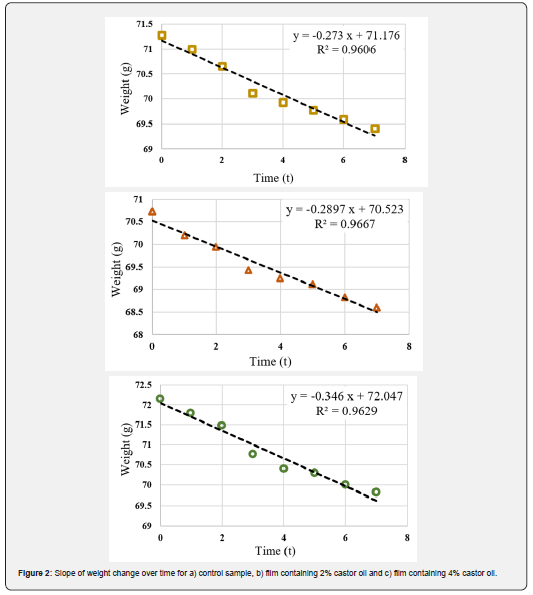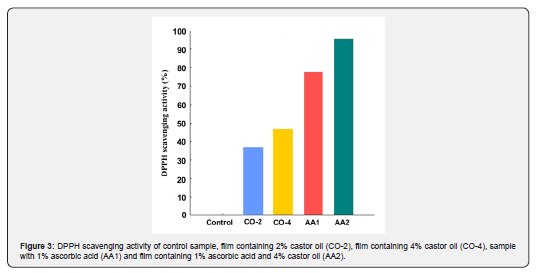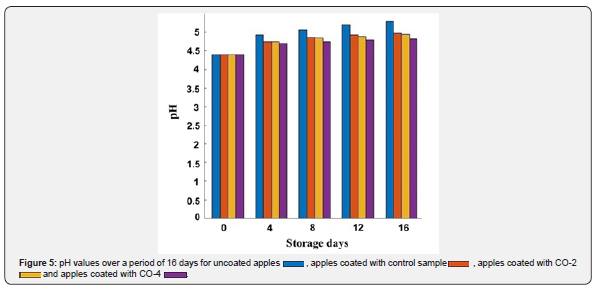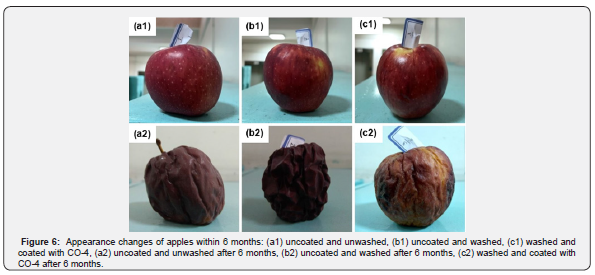Tumor Medicine & Prevention - Juniper Publishers
Abstract
Glioblastoma is the most devastating and most common brain tumor in adults. According to the (US) National Cancer Institute (NCI), there were an estimated 23,380 new cases and 14,320 deaths from brain and other nervous system cancers in the US in 2014. I will emphasize here therapy using Antiangiogenic agents, particularly in the case of tumors in their early development, taking advantage of the associated weakening of the blood brain barrier. As a prelude to this new development, I review below the current lines of treatment for Glioblastoma, making a distinction between primary and secondary tumors, and recurrent tumors. I will also review the brain protective barriers, chiefly the blood brain barrier which, as its name implies, is the primary impediment for the delivery of therapeutic drugs. I will also analyze the drug targeting difficulties and the mechanisms for drug targeting.
Keywords: Bevacizumab; Bradykinin; Cediranib (an antiangiogenics); Cilengitide; Mannitol; Temozolomide
Abbrevations: BBB: Blood Brain Barrier; BPB: Brain Protective Barriers; DFS: Disease Free Survival; CNS: Central Nervous System; CSF: Cerebro Spinal Fluid; EGFR: Epidermal Growth Factor Receptor; EVGF: Endothelial Vascular Growth Factor; GB: Glioblastoma; GBM: Glioblastoma Multiform; GY: Grey; HIFU: High Intensity Focused Ultrasound; MGMT: Methylated Promoter Gene (O6-alkylguanine DNA alkyltransferase); NCI: (US) National Cancer Institute; OS: Overall Survival; PFS: Progression-free survival; P-gp: P-glycoprotein; TMZ: Temozolomide
Introduction
Glioblastoma (GB), also known as Glioblastoma Multiform (GBM), is the most common primary brain tumor in adults. It remains an unmet need in oncology. The survival rate is ~1 year, and only 5% of the people affected live for 5 years. Figure 1 is an illustration of the appearance of GBM while Figure 2 contrasts an actual GBM with the corresponding contrastenhanced CT images. In a recent review article [1], the various treatment modalities devised so far for primary and recurring GBMs after treatment and their metastases, have been described in detail. These included surgery, conformal radiotherapy, boron neutron therapy, intensity modulated proton beam therapy, Antiangiogenic therapy, alternating electric field therapy, micro RNA, immunotherapy, adjuvant therapy, gene therapy, stem cell therapy and intranasal drug delivery without neglecting palliative therapies. Unfortunately, to date, the trials have not shown a benefit in overall survival (OS) either in the case of Antiangiogenic agents alone or in combination with chemo radiotherapy.
As is known, GBMs are highly vascular tumors and overexpress endothelial vascular growth factor (EVGF), a proantigenic cytokine. Premised on earlier studies that had shown promising radiographic response rates, delayed tumor progression, and a relatively safe profile for anti-EVGF agents, several randomized phase III trials were conducted. It was thus preliminarily concluded that Antiangiogenic agents might not be beneficial in unselected populations of patients with GBM [2].
Even for selected patients, biomarker identification has lagged behind the process of drug development and, apparently, no validated biomarker for patient stratification exists. Nonetheless, phase II trials have revealed an association between increased perfusion and oxygenation (which are consequences of vascular normalization) and survival. This suggests that earlyimaging biomarkers could help to identify that subset of patients who will most likely benefit from anti-EVGF agents.
will now report on potentially more promising results in which advantage is taken of the weakening of the blood brain barrier (BBB) by GBMs. This other approach may lead to new ways to kill brain tumors that use the BBB weakness to get targeted drugs into the brain during the early stages of the cancer. But first, let us briefly review the current lines of treatment for GBMs.
Current Lines of Treatment for Glioblastoma
First-line treatments have been clearly defined since 2005; however, no standard second-line treatment has yet been determined. No prevention strategy is known although several possible risk factors have been discussed. Most treatments cannot eradicate all tumor cells, thus, surgery is often insufficient given the diffuse nature of the disease, chemotherapy has major limitations because most drugs cannot cross the BBB, and penetration into brain cells is limited. In addition, the cells in brain tumors are greatly heterogeneous, which limits the treatment efficacy and explains the high rate of progression of the disease. The standard treatment consists of:
a) Surgery (maximal resection).
b) Radio chemotherapy (6 weeks of radiotherapy at a dose of 60 Grey [GY] together with concomitant chemotherapy with temozolomide (TMZ) at a rate of 75mg/ml daily); and once chemo radiotherapy is completed.
c) Adjuvant treatment (a minimum of 6 months with TMZ is started at a dose of 150-200mg/ml for 5 days every 28 days) [3-11].
Prognosis and response rates with TMZ are known to be better in patients presenting with a Methylated MGMT promoter gene (O6-alkylguanine DNA alkyltransferase). Survival of patients with Methylated MGMT is 21.7 months compared with 15.3 months for patients with a non-Methylated gene. Recent clinical trials in elderly patients (more than 65 years of age) diagnosed with GBM showed that TMZ is not inferior to radiotherapy. Patients with MGMT promoter methylation experienced the best results, facilitating decision-making in this fragile elderly population.
Two recent phase III clinical trials investigated the addition of bevacizumab to standard treatment with TMZ. They showed no increase in overall survival (OS) but disease-free survival (DFS) increased. In addition, several clinical studies have looked at:
a) The use of various drugs (e.g. integrand inhibitors such as cilengitide and other Antiangiogenic such as cediranib).
b) Vaccines against the epidermal growth factor receptor (EGFR), specifically the EGFR variant 3 (EGFRV3), which is detected in 30% of the patients.
Another innovative strategy is the application of alternating intermediate-frequency electrical fields (100–300kHz) as an adjunct to standard treatment. Immunotherapy has not yet demonstrated any conclusive results to date. There are no cures at present [12].
The use of cytotoxic drugs (chemotherapy) is essentially an educated trial and error approach with one or a combination of approved drugs. It does not stem from the deep understanding of tumor biology nor does it consider the braiding of both normal and cancerous cells in our genome [13-17]. As a result, chemotherapy has historically provided little durable benefit as the tumors recur within several months even in the case of the more accessible tumors that are located outside the brain. For brain tumors, the access is even more challenging because of the presence of the brain protective barriers (BPBs), chiefly the BBB, compounding the difficulties [18,19].
Distinction between primary and secondary tumors
It is important to distinguish primary from secondary GBMs. The former tumors occur spontaneously and the latter have progressed from a lower-grade glioma. Primary GBMs have a worse prognosis, different tumor biology, and may have a different response to therapy, resulting in a critical evaluation to determine patient prognosis and therapy. Over 80% of secondary GBMs carry a mutation in IDHI, whereas this mutation is rare in primary GBMs (5-10%). Thus, IDHI mutations are a useful tool to distinguish primary and secondary GBMs since histopathologically they are very similar and the distinction without molecular biomarkers is unreliable.
Targeted biomarkers and molecular targets that are specific to each person’s genomics can also be judiciously used to personalize the treatment to the selected patient. Biomarkers and molecular targets contain information that can be gathered from a person’s cancer cells and then used to tell what chemotherapeutic agents may work best for that specific patient. These biomarkers can also help locate natural phototherapeutics, which aid in personalizing a treatment program.
Case of recurrent glioblastoma
Disease recurs in almost all patients, and most patients will not be candidates for new surgery or a new course of irradiation so that therapeutic options are limited. Progression-free survival (PFS) after recurrence or progression is ~10 weeks, and OS is ~30 weeks. If the patient’s condition allows, the second-line treatment consists of anti-cancer drugs. Other approaches have therefore also been studied, including: Antiangiogenic, EGFR inhibitors, Nitrosoureas (alkylation agents characterized by high lipophilicity, allowing them to cross the BBB) and retreatment with TMZ. However, a standard second-line therapy has not yet been established.
It must further be emphasized that certain patients will be candidates only for symptomatic treatment because of their poor general condition or co-morbidities. Ensuring appropriate management and support for the complications that typically occur during the course of the disease (convulsions, thrombosis, and cognitive deteriorations) are essential.
The Brain Protective Barriers
Description
Being the most delicate organ of the body, the brain is protected against potentially toxic substances by barriers that restrict the entry of most pharmaceuticals into the brain. The collective term “blood-brain barrier” (BBB) actually describes four main interfaces between the central nervous system (CNS) and the periphery:
a) The BBB proper formed by complex tight junctions between the endothelial cells of the cerebral vasculature. Its primary manifestation is the impermeability of the capillary wall due to the presence of the junctions and a low endocytic activity.
b) The blood-cerebra spinal fluid (CSF) barrier formed by tight junctions between epithelial cells of the choroid plexus. Both (a) and (b) extend down the spinal cord.
c) The outer CSF-brain barrier formed by tight junctions between endothelial cells of the arachnoids vessels (pia arachnoids).
d) The inner CSF-brain barrier formed by strap junctions between the neuro-ependymal cells lining the ventricular surfaces. It is present only in early development and absent in the adult [18,19].
The above barriers and the blood retinal barrier (not studied here) are parts of a whole realm of barriers. The following considerations are limited to the BBB proper (Figure 3).
Function
The BBB behaves as a continuous lipid bilayer surrounding the brain. It is the major obstacle preventing the passage of polar and lipid-insoluble substances and drugs that are potentially useful for combating diseases affecting the CNS. Unfortunately, in its neuro protective role the BBB functions to hinder the delivery of many potentially important diagnostic and therapeutic agents to the brain. Therapeutic molecules and antibodies that might otherwise be effective in diagnosis and therapy do not cross the BBB in adequate amounts. Essential nutrients are delivered to the brain by selective transport mechanisms (glucose transporter, amino acid transporters, etc). Although most drugs can enter the brain by passive diffusion through the endothelial cells depending on their lipophilicity, degree of ionization, molecular weight, relative brain tissue and plasma bindings some others can use specific endogenous transporters. In such cases, bindi competition on the transporter with endogenous products or nutrients can occur and limits drug transfer. Extensive efforts are therefore being made to come up with drug delivery strategies that would enable the passage of therapeutic molecules safely and effectively. Such strategies involve modifying the drug itself or coupling it to a vector for receptor-mediated or adsorptionmediated transcytosis [2,3]. In other cases such as, for example, in Antiangiogenic treatment discussed here, advantage is taken of modifications (weakening, disruption, modification, etc.) of the BBB for drugs to pass through.
Drug targeting difficulties
The BBB can be a major impediment and the main limitation for the treatment of neurological diseases caused by inflammation, tumors or neurodegenerative disorders. The close intercellular contact between cerebral endothelial cells due to tight junctions also prevents the passive diffusion of hydrophilic components from the bloodstream into the brain. Thus, many drugs are unable to reach this organ at therapeutic concentrations. Various attempts have been made to overcome the limited access of drugs to the brain e.g. chemical modification, development of more hydrophobic analogs, or linking an active compound to a specific carrier. Transient opening of the BBB in humans has been achieved by intracarotid infusion of hypertonic Mannitol solutions or of Bradykinin analogs. Another way to increase or decrease brain delivery of drugs is to modulate the P-glycoprotein (P-gp) whose substrates are actively pumped out of the cell and into the capillary lumen. Many P-gp inhibitors or inducers are available to enhance the therapeutic effects of centrally acting drugs or to decrease central adverse effects of peripherally active drugs [4]. Nonetheless, overcoming the difficulty of delivering therapeutic agents to specific regions of the brain presents a major challenge to the treatment of most brain disorders.
Mechanisms for drug targeting
Mechanisms for drug targeting in the brain involve going either “through” or “behind” the BBB: In the former case, this entails: a) Disrupting
a) Disrupting the BBB by osmotic means. This can be accomplished biochemically by the use of vasoactive substances such as Bradykinin or even by localized exposure to high-intensity focused ultrasound (HIFU).
b) Modulating the expression and/or the activity of efflux transporters. Several specific transport systems (via transporters expressed on cerebral endothelial cells) are implicated in the delivery of nutrients, ions and vitamins to the brain; other transporters expressed on cerebral endothelial cells extrude endogenous substances or xenobiotics (which have crossed the cerebral endothelium) out of the brain and into the bloodstream.
c) Using the physiological receptor-dependent BBB transport. Other methods used to get through the BBB by increasing the permeability of the BBB entail the use of endogenous transport systems, including carrier-mediated transporters such as glucose and amino acid carriers.
Receptor-mediated trancytosis for insulin or transferring; the blocking of active efflux transporters such as the transferring receptor of active efflux transporters such as P-gp. However, vectors targeting BBB transporters, such as the transferring receptor have been found to remain entrapped in brain endothelial cells of capillaries, instead of being ferried across the BBB into the cerebral parenchyma. Still, other methods create new viral or chemical vectors to cross the BBB [5].
Drug delivery methods “behind” the BBB by-pass the BBB by central drug administration. They include intracerebral implantation (such as with needles) and convection-enhanced distribution. Mannitol can be used to bypass the BBB.
Antiangiogenic Therapy in Presence of a Weakened Blood Brain Barrier
Recent experiments with mice [20] have shown that cancer cells hijack and feed off blood vessels. In the brain, these results in a weakened BBB and this may provide one reason for the rapid spread of GBMs. This observation may lead to new ways to kill brain tumors using the BBB weakness to get targeted drugs into the brain during the early stages of the cancer. In these studies, the researchers used fluorescent dyes and a variety of imaging techniques in mouse models of GBMs to see how tumor cells travel to the brain and how they relate to other cells and blood vessels. They focused on interactions among GBM cells, astrocytes and blood vessels.
Outside the main tumor mass, these researchers found that nearly all GBM cells gather in the space between the astrocytic end feet and the outer surface of blood vessels. It appeared that the cancer cells were using the network of small blood vessels as a scaffold to guide their migration along the blood vessels as they extracted nutrients from the blood inside. It also appeared that the GBM cells hijacked control over blood flow in the BBB away from the astrocytes, loosening the tight junctions, and resulting in a breakdown in the barrier. Very small groups of GBM cellseven individual cells - could weaken the BBB in the early stages of the disease. At an early stage of the disease, as they invade the blood vessels, it looks like the tumor cells are not completely protected by the BBB, thus making them more vulnerable to targeted drugs delivered via the bloodstream to the brain.
If the above findings hold true in humans, treatment with anti-invasive agents might be beneficial in newly diagnosed GBM patients. A better understanding of how tumor cells and the BBB interact may lead to more successful ways to treat GBM patients. This includes a better understanding of how the BBB is regulated and exactly how tumor cells hijack control over blood vessels to grow and spread.
Summary and Conclusion
Glioblastoma (or Glioblastoma multiform) is the most common primary brain tumor in adults. It remains an unmet need in oncology. I have reviewed the difficulties encountered in devising treatment lines and the correspondingly associated risks, making a distinction between a primary and the often recurring tumor. I have also briefly analyzed the various treatment options whether singly or in combination. Chemotherapy (or treatment with cytotoxic drugs) has historically been not beneficial in general, and a fortiori not in the brain which is generally surrounded by protective barriers that represent serious impediments. Over recent years, multiple drugs have been assessed both in immunotherapy or combination therapy. Multiple trials have been conducted; unfortunately, most of these trials do not have a control arm, have used different assessment tools, and may have been influenced by many events including repeat surgery. As a consequence, the trial conclusions are rather controversial.
In addition to chemotherapy, I have again briefly reviewed the other treatment strategies that are used either singly or in combination with chemotherapy, including: surgery; conformal radiotherapy; boron neutron therapy; intensity modulated proton beam therapy; Antiangiogenic therapy; alternating electric fields; and even vaccines and palliative therapies and lifestyle changes [21-25].
In present-day practice, it is recommended that treatment of recurrent Glioblastoma be individualized according to several factors: performance status, age, tumor histology, biomarkers, possibility for repeat surgery, time to recurrence and response to prior treatment. It is also recommended that patients be enrolled into well-designed clinical trials to maximize their clinical benefits. Research into these and other treatment options is ongoing including but not limited to: micro RNA, immunotherapy, adjuvant therapy, gene therapy, stem cell therapy and intranasal drug delivery. It is too early to report definitely on their corresponding benefits and associated risks.
Recent experiments with mice have shown that cancer cells hijack and feed off blood vessels. In the brain, these results in a weakened BBB and this may provide one reason for the rapid spread of GBMs. This observation may lead to new ways to kill brain tumors using the BBB weakness to get targeted drugs into the brain during the early stages of the cancer. Outside the main tumor mass, nearly all GBM cells gather in the space between the astrocytic end feet and the outer surface of blood vessels as if the cancer cells were using the network of small blood vessels as a scaffold to guide their migration along the blood vessels as they extracted nutrients from the blood inside. It also appeared that the GBM cells hijacked control over blood flow in the BBB away from the astrocytes, loosening the tight junctions, and resulting in a breakdown in the barrier. Very small groups of GBM cellseven individual cells-could weaken the BBB in the early stages of the disease. At an early stage of the disease, as they invade the blood vessels, it looks like the tumor cells are not completely protected by the BBB, thus making them more vulnerable to targeted drugs delivered via the bloodstream to the brain. If the above findings hold true in humans, treatment with anti-invasive agents might be beneficial in newly diagnosed GBM patients. A better understanding of how tumor cells and the BBB interact may lead to more successful ways to treat GBM patients. This includes a better understanding of how the BBB is regulated and exactly how tumor cells hijack control over blood vessels to grow and spread.
To Know more about Tumor Medicine & Prevention
Click here: https://juniperpublishers.com/index.php





















